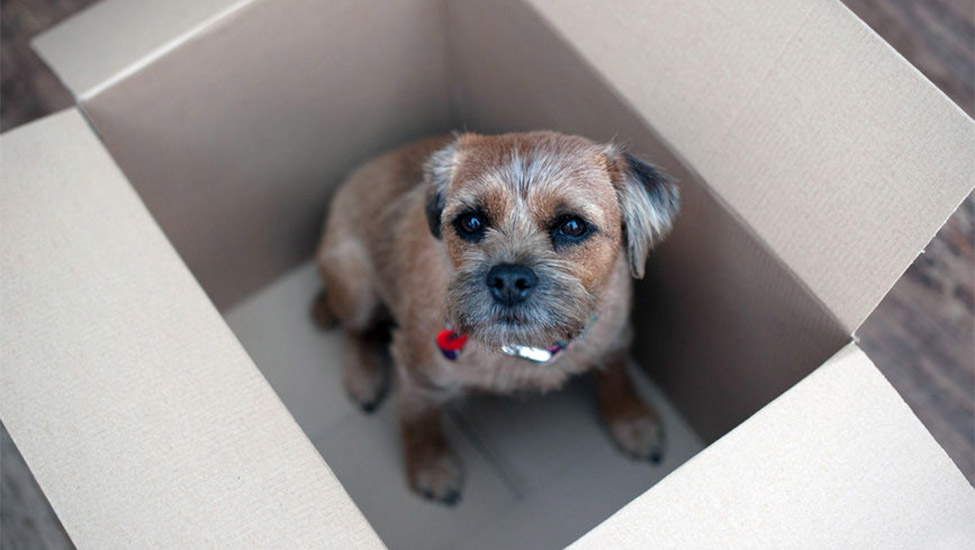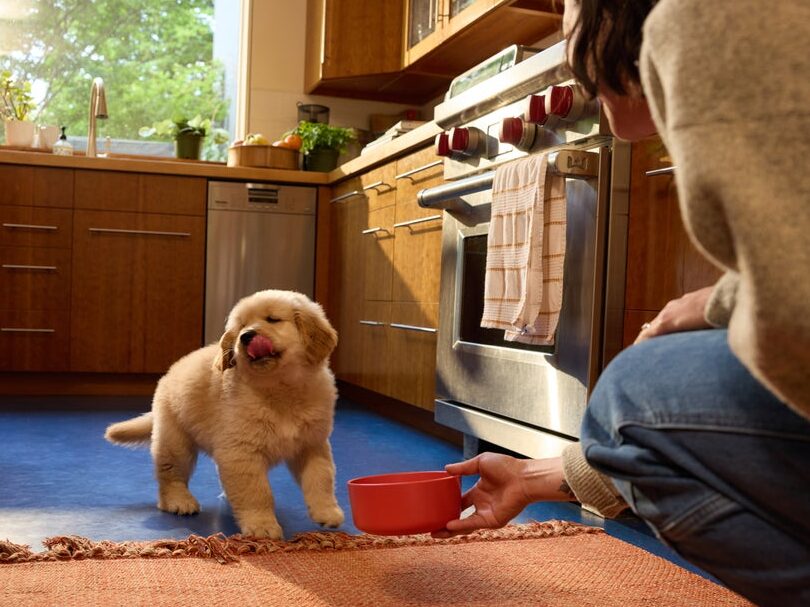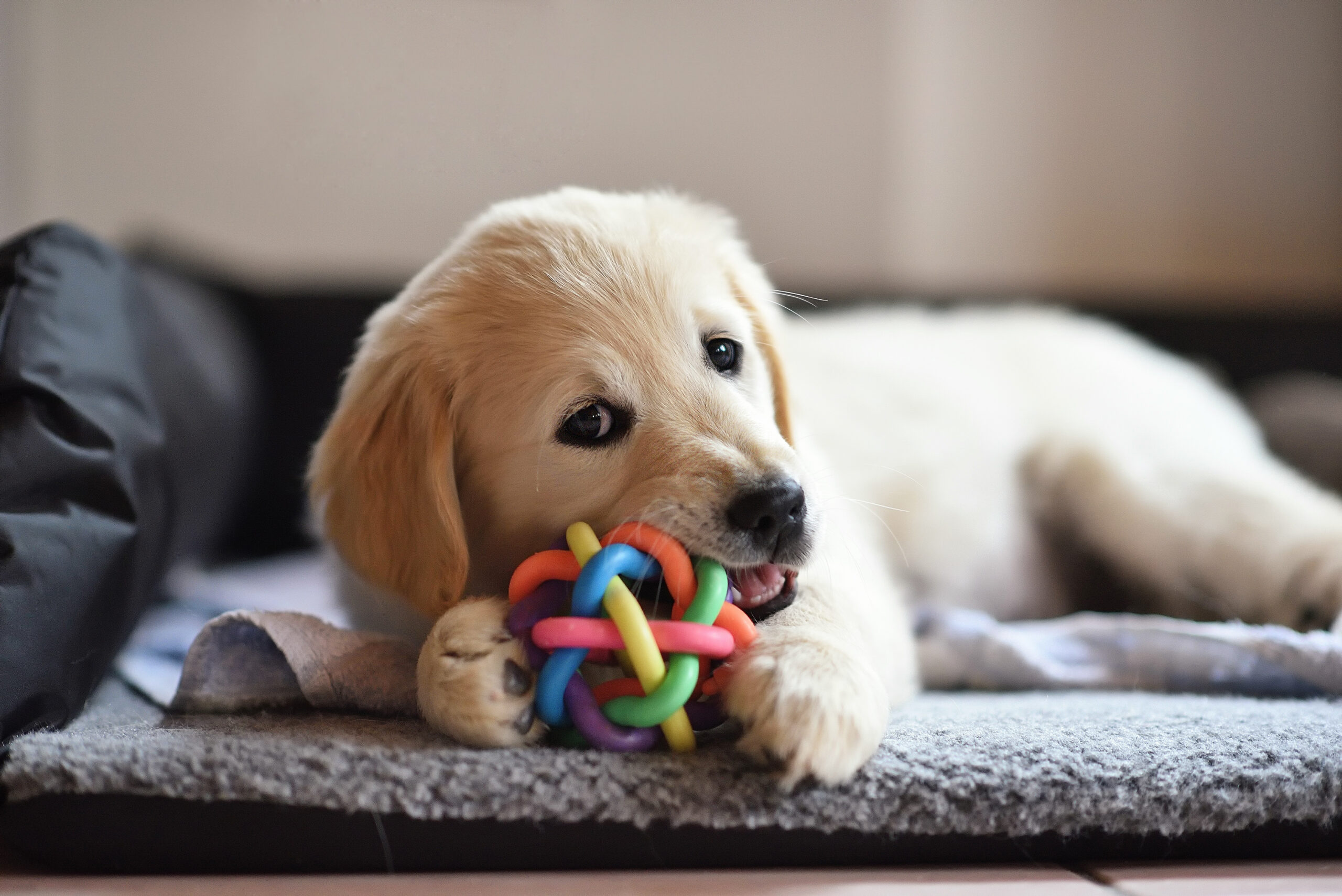Hey Ollie blog readers! We’re offering you an exclusive 60% OFF your starter box! Try now!
Moving is one of THE most stressful things for humans. But what’s mostly a headache for us is a total rollercoaster of confusion for dogs. Furniture suddenly goes missing, new scents linger in familiar territory, schedules become erratic… and that’s all before the move actually happens. During times of apparent chaos for our pups, the best thing we can do is keep calm and have a plan of action. So here’s everything you need to know to make moving with your dogs as stress-free as possible:
Set some crate expectations
Got a pup who’s kennel shy? Give him plenty of time to get used to it, advises Bridget Monrad, RN, RET, and President of Happy Tails Travel. The trick is to start crate training well in advance of your move. Be sure to give him lots of verbal praise throughout the process. Work your way up to short, crate-bound drives. To keep the space comfy, Monrad recommends an absorbent pad, some blankets, a food and water dish, and one of your worn-in shirts (your familiar scent is comforting for your dog). Don’t pack toys for the transport during the move, as they may pose choking hazards.
Ready, set, vet
The best time to visit the vet is within 10 days of your moving date, say Monrad. That way, you can request a Health Certificate confirming your dog is currently healthy for travel. While you’re there, ask for pup doc recs in your new area. This is also a good time to make sure your dog has proper ID in place (including a microchip). Confirm he’s cleared for vaccination requirements in your new destination, too.
Battle anxiety in advance
Humans might stress eat but dogs stress chew. If your dog is panicking, try giving him a sturdy chew toy to focus his nervous energy on. Megan Stanley, CPDT-KSA, CBCC-KA of Dogma Training, also suggests implementing a supplement routine: Ask your vet or trainer about natural options, like Rescue Remedy or DAP (Dog-Appeasing Pheromone), which may help alleviate general and travel-related stress and separation anxiety. For potentially overwhelming events – e.g., open houses, or anything with movers – Stanley recommends completely removing your dog from the situation. New people + shuffling of belongings = mega-stress minefield for any pup. Consider dropping your dog with friends or her usual sitter during those times.
Think around the box
Before you start packing, decide your plan of action with the boxes. Many dogs panic when they see a single suitcase – imagine what it’s like for them to see the whole house get packed up! One method is to keep the boxes completely out of sight. But if that’s not feasible, leaving the packing supplies out long enough may actually desensitize your dog to their presence. Either way, pack your dog’s stuff last so as to minimize disruptions to his personal space.
Get their workout in
Exercise is imperative the day of the move, says Stanley. The less pent-up energy your furry travel companion has, the smoother the journey will be. Even if it’s too cold for your normal routine, or you don’t have quick outdoor access (e.g., you’re in a hotel on the road), you can burn off plenty of energy indoors with our trainer tips for tuckering out your dog in a small space. And if you’re going a long distance, don’t forget to scout dog-friendly parks, restaurants, and hotels along the way.
Consider a holistic approach
If you’ve followed everything according to plan and your dog is still freaking out, try rubbing a drop or two of lavender essential oil on your hands and then pet your pooch normally. Just like humans, the holistic benefits of lavender for dogs are many, and include alleviating anxiety and car ride sickness. Once he’s calmed down, give your dog a new chew bone or interactive toy for distraction.
Let your pup adjust at her own pace
When you arrive to your new home, the ASPCA recommends introducing your dog to one (pet-proofed) room at a time. If you’ve had a particularly long journey, confine the tour to just your pup’s new space for now. Familiar scents come in handy here, too – so don’t wash your dog’s usual blanket or bedding until after the move. When you’re somewhat settled in, Stanley says, take slow walks with your dog around the new yard and neighborhood. Let her take her time sniffing – patience is crucial, since she may be over-stimulated and excessively excitable. Give her plenty of downtime, too.
Consistency is key
Stick to your normal mealtimes and walk routines as faithfully as possible. And pile on the positive reinforcement; rewarding your dog for his good behavior will encourage him to interpret the move as a good thing. He may have a hard time understanding the new lay of the land – give him a treat right away every time he goes to the bathroom in the correct spot, for example, or lies down in his bed rather than on the sofa. With a little extra patience and planning, your pup will be king or queen of their new castle in no time.
The Ollie blog is devoted to helping pet parents lead healthier lives with their pups. If you want to learn more about our fresh, human-grade food, check out MyOllie.com.
Tagged As:

The nutrition your dog needs,
the food they want.

Enjoying our articles? Subscribe our Newsletters and get new articles directly to your inbox
You might also like
13 May 2025
8 MINS READ
Puppy Training Guide & Behavior Timeline
Bringing home a puppy is pure magic. It’s also pure chaos—tiny teeth, zoomies, accidents in the house, and moments that make you wonder if you’re raising a future genius or a tiny tornado. …
by Ollie Pets
10 May 2025
12 MINS READ
New Puppy Checklist: Guide To Prepare For A New Dog
Bringing home a new puppy? This checklist covers everything new dog owners need—from essential supplies to training, feeding, and first vet visits.
by Ollie Pets
3 April 2025
9 MINS READ
Home Remedies for Fleas on Dogs: 10 Natural Ways That Actually Work
Wondering what kills fleas on dogs instantly and naturally? If your pup is scratching like crazy, it may be time to take action. In this guide, we’ll show you the most effective home remedies for…







